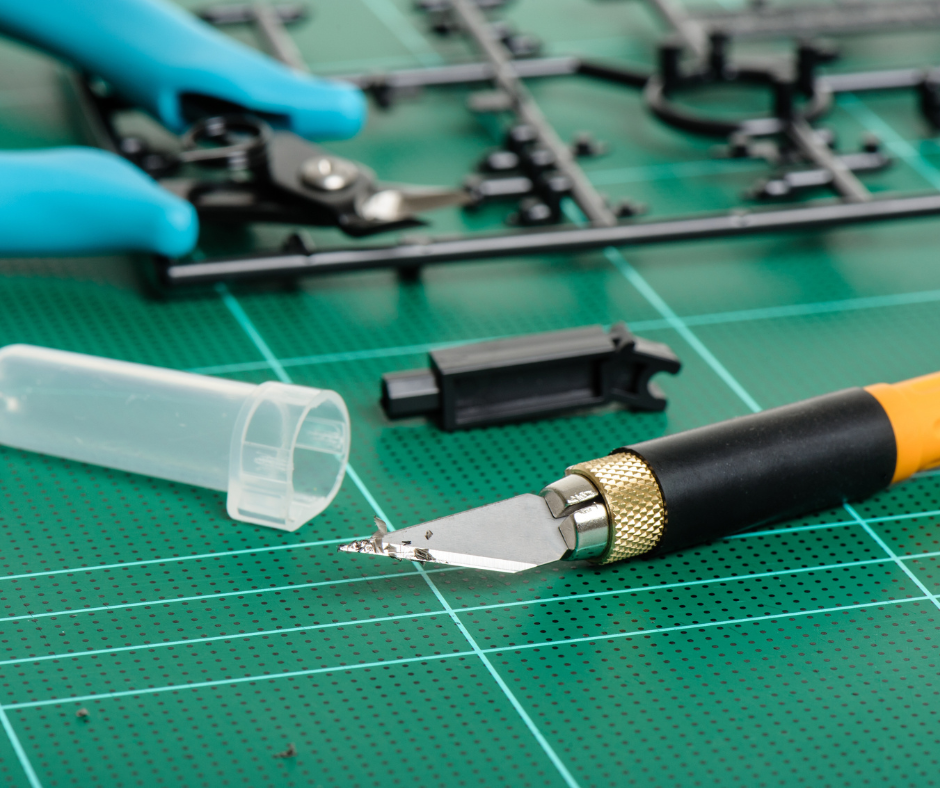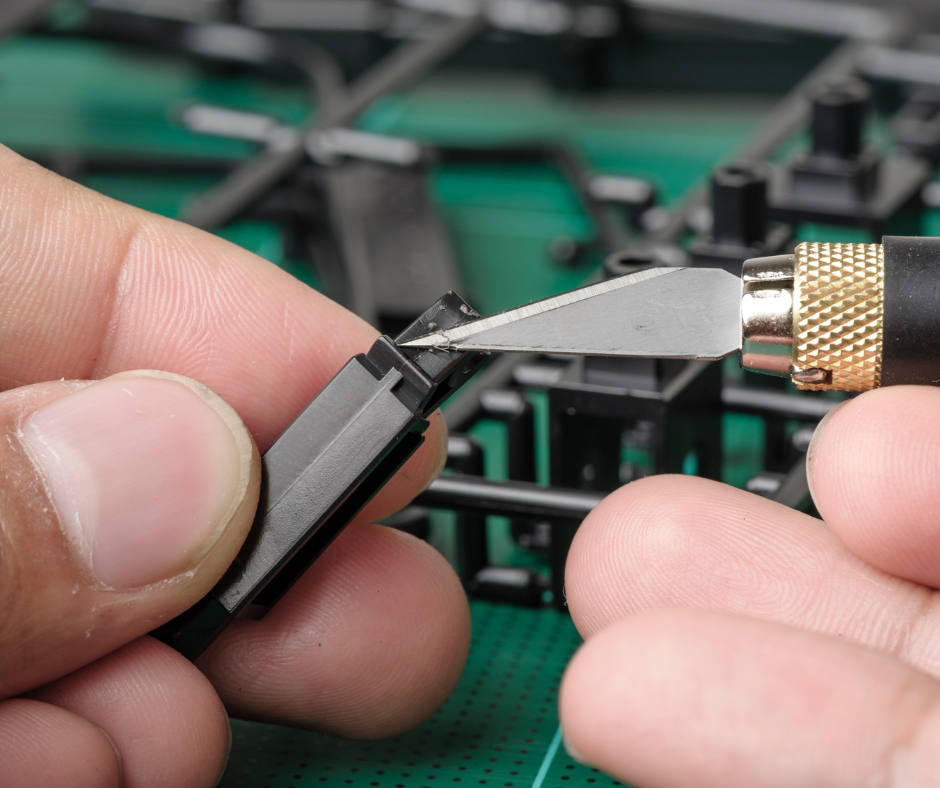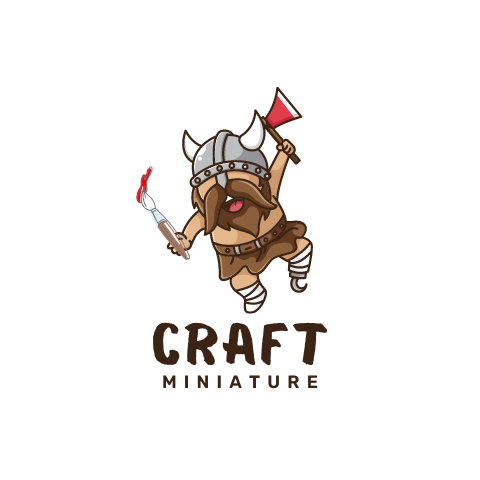Whether you’re a miniature wargamer or like to paint them for fun, there will come a time when you need to fill in some gaps. This can be caused by several things, such as wear and tear on the miniatures or sculpting errors. No matter the cause, it’s important to fix them, so your miniatures look their best.
In this article, we’ll cover the basics of putty and how to use it to fill in gaps on your miniatures. If you’re new to this, start by reading about putty and then move on to other methods like sculpting and Green Stuff. With a little practice, you’ll be able to fix any miniature gaps in no time!

What is putty, and what are its uses in miniatures gap filling?
Putty is a modelling clay in two main varieties: epoxy and polyester. It’s a popular choice for filling in gaps on miniatures because it dries hard and can be sanded down to create a smooth surface. Epoxy putty is the stronger of the two and is best for larger gaps, while the polyester putty is more flexible and ideal for smaller gaps.
What is gap filler for miniatures?
Gap filler is any material that can fill in gaps on miniatures. These fillers will be liquids in their original form and then cure and set hard to close the gap. These gaps are usually found between the connecting parts of a miniature (such as an arm to a torso). This can happen due to an issue in the manufacturing process or incorrect assembly.
What you need to know about fillers before you start?
Curing
All fillers have a different curing time, and it is important to know what the curing time is for your chosen filler. This will ensure that you don’t accidently damage your piece while the filler is still curing.
Shrinkage
Another thing to be aware of is shrinkage. Some fillers will shrink as they cure, so it’s important to take this into consideration when you’re deciding how much filler to use.
Colour
The colour of the filler is also something to think about. If you’re using a clear filler, then it won’t matter what colour it is. But, if you’re using a coloured filler, you’ll want to make sure that the colour is close to the colours of the miniature, so it doesn’t stand out underneath your chosen primer.
Ease of Use
Some fillers are easier to use than others. If you’re a beginner, it might be best to start with an easy-to-use filler and move on to something more difficult once you’ve gotten the hang of it.
Filling Capacity
Some fillers are built for small recesses or tiny gaps, such as Liquid Green Stuff. Other fillers can work to bridge the gap between two pieces that are much further apart.
Durability & Strength
The strength and durability of the filler are something to consider, especially if you plan on playing with your miniatures. For example, if you’re using putty to fill in the gaps of your wargaming miniatures, you’ll want to ensure that it’s strong enough to withstand being played with.
Cost
The cost of the filler is also something to think about. If you’re on a budget, you might want to choose a cheaper filler. However, if you’re willing to spend a bit more money, you might want to choose a high-quality filler that will last longer.
Now that you know what to look for in a filler let’s take a closer look at putty and how to use it to fill in gaps on your miniatures.

Epoxy Putty
Epoxy putty is a two-part putty mixed together and then applied to the miniature. It’s important to follow the instructions on the package so the putty doesn’t dry out before you have a chance to use it. Once it’s applied, the putty will take around 24 hours to cure.
Polyester Putty
Polyester putty is a one-part putty that doesn’t need to be mixed together. It’s a bit more difficult to work with than epoxy putty, but it’s still a good choice for filling in gaps on miniatures. Polyester putty will take around 48 hours to cure.
Sculpting
Sculpting is another option for filling in gaps on miniatures. This method is best for larger gaps, as it can be difficult to sculpt small details. Sculpting is also a bit more time-consuming than using putty.
Liquid Green Stuff
Green stuff is a two-part putty that, when applied to the miniature, will provide a smooth finish between smaller gaps. If you want to learn about using Liquid Green Stuff, we recommend you check out our guide.
Consider the following before choosing your filler
Now that you know the different methods for filling in gaps in miniatures, it’s time to choose the right one for your project. Consider the gap size, the type of filler you want to use, and your budget. With a little practice, you’ll be able to fill in any gaps in your miniatures!
How do you apply putty to your miniatures, and how much do you need?
No matter what type of putty you use, the process for filling gaps is the same.
- First, clean the area around the gap with a hobby knife to remove any debris.
- Apply the putty to the gap and smooth it out with a wet finger or toothpick.
- Allow the putty to dry before moving on to the next step.
- Once the putty is dry, use a hobby knife or sandpaper to smooth the area around the gap.
- Finally, paint over the area to match the rest of the miniature.

Top Tip: It’s important to note that you don’t need to use a lot of putty to fill in gaps. Using too much putty can make the area around the gap difficult to sand down and paint over. Start with a small amount of putty and add more if necessary.
What are some of the benefits of using putty to fill gaps in miniatures?
- One of the biggest benefits of using putty to fill gaps is that it dries hard. This makes it much easier to sand down and create a smooth surface.
- Another benefit of using putty is that it is easy to find and relatively inexpensive. You can find putty at most craft stores or online.
- Finally, putty is easy to use and doesn’t require any special tools or equipment. All you need is a hobby knife and some sandpaper.
How do you remove excess putty from your miniature?
If you accidentally apply too much putty, don’t worry! Excess putty can be removed with a hobby knife or sandpaper. Just be careful not to damage the surrounding area. If you need to remove the putty from an older model, then you can use a hobby knife or file.

Are there any other methods for filling gaps in miniatures?
Liquid Green Stuff
Green stuff is another popular method for filling gaps in miniatures. Green Stuff is a two-part epoxy putty that comes in a roll. It’s similar to regular putty, but it’s stronger and more flexible.
Green Stuff is a great choice for larger gaps or areas that need to be durable. It’s also easy to use and can be found at most hobby stores.
We encourage you to read our guide on Liquid Green Stuff and how you can make the most of using it.
Vallejo Plastic Putty
Vallejo plastic putty is another option for filling gaps in miniatures. Vallejo plastic putty is a two-part epoxy putty that comes in a tube. It’s similar to Green Stuff, but it’s not as strong or flexible.
Vallejo plastic putty is a good choice for smaller gaps. It’s also easy to use and can be found at most hobby stores.
Milliput
Milliput is a two-part epoxy putty that comes in a block. It’s similar to Green Stuff and Vallejo plastic putty, but it’s not as strong or flexible.
Milliput is a good choice for larger gaps. It’s also easy to use and can be found at most hobby stores and through amazon.
Final Thoughts
No matter what type of miniature you’re working on, there will come a time when you need to fill in a gap. Putty is a great choice for filling gaps because it’s strong, easy to use, and dries hard. Just be careful not to use too much putty, and you’ll be able to create a smooth surface ready for painting.
If you’re looking for a more durable option, Green Stuff is a great choice. It’s strong and flexible, making it ideal for larger gaps.
Whichever method you choose, remember to take your time and be careful not to damage the surrounding area. With a little practice, you’ll be able to fix any gaps in your miniatures.


